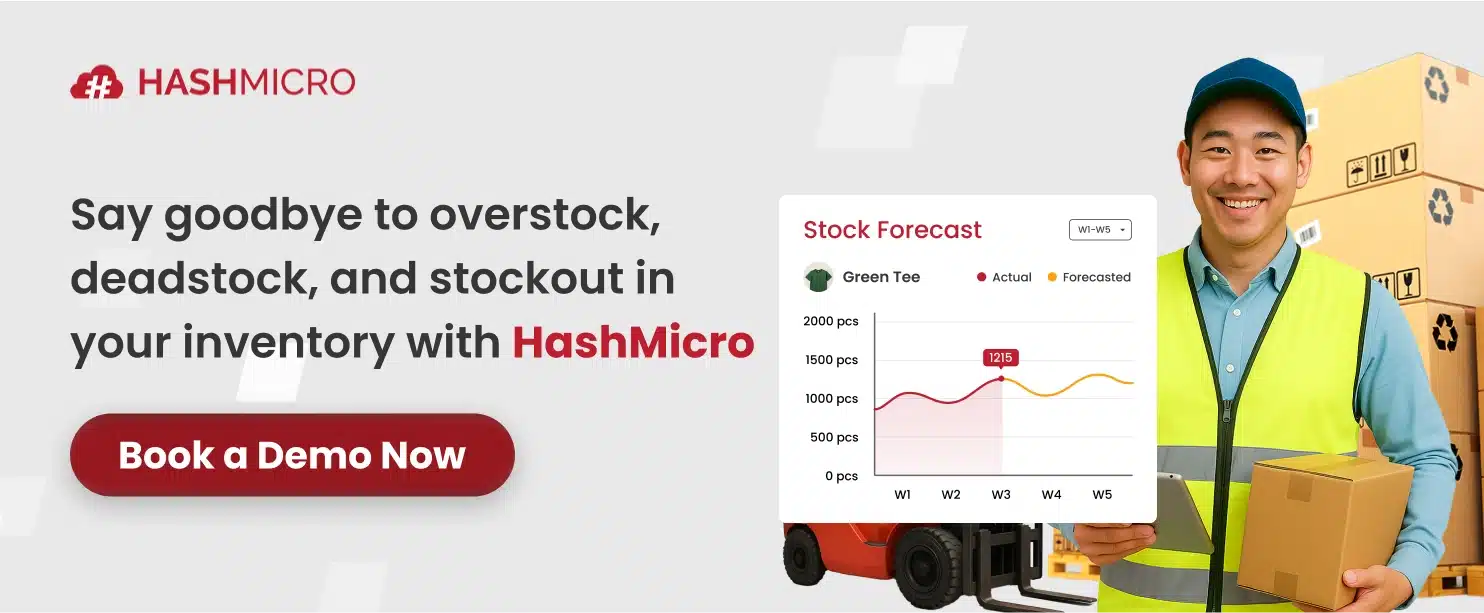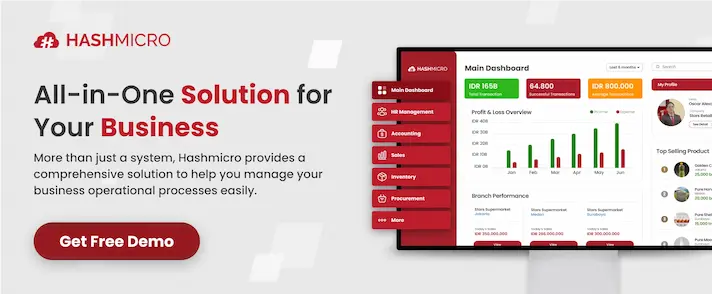Many businesses I’ve encountered struggle with inventory management. Some overstock items never sell, while others run out of stock just as demand peaks. I’ve seen how both scenarios can drain cash flow, disrupt operations, and erode customer trust over time.
From my experience, managing inventory without accurate forecasting often leads to costly mistakes such as excess stock, stockouts, and missed sales opportunities. That’s why I rely on inventory forecasting to turn uncertainty into clarity through data-driven insights that support smarter decisions.
In this article, I’ll walk you through a complete guide to inventory forecasting. You’ll also discover different forecasting methods and formulas, along with a free demo you can try to see how these techniques can optimize your inventory strategy in real time.
Key Takeaways
|
Understanding Inventory Forecasting and How It Works
Inventory forecasting predicts future stock needs by analyzing sales data, trends, and market conditions. It helps businesses maintain optimal inventory levels, avoiding shortages and excesses to ensure products are available when customers need them.
In my process, I examine past sales data to uncover trends and combine that information with factors like promotions or supply chain lead times. By applying different forecasting methods, I can create accurate projections that guide my purchasing and inventory decisions, ultimately enhancing profitability and operational efficiency.
Inventory Forecasting Benefits

From my perspective, effective inventory forecasting plays a crucial role in keeping business operations running smoothly. That’s why I believe understanding its importance is essential to staying competitive and efficient. Here are the key benefits I’ve observed when implementing inventory forecasting in my business operations:
1. Lowers inventory holding costs
Optimizing stock levels through accurate inventory prediction reduces warehousing costs by preventing excess inventory. This minimizes losses from obsolescence inventory and improves overall efficiency, ensuring resources are used effectively.
2. Minimizes stockouts and overstocking
Effective inventory forecasting and prediction help balance stock levels, reducing the risks of stockouts and overstocking. This ensures you have the right inventory to meet consumer demand without tying up capital in unnecessary surplus.
3. Improves cash flow management
Accurate inventory forecasting frees up cash by preventing excess inventory. This allows better allocation of resources, supporting crucial areas like marketing or expansion, and improving financial stability by reducing the capital tied up in unsold goods.
4. Boosts customer satisfaction
Predicting inventory accurately ensures products are available when customers need them, meeting consumer demand and boosting satisfaction. This helps businesses avoid stockouts and ensures customers always find what they want.
5. Enables data-driven decision-making
Inventory forecasting provides insights that help businesses make informed purchase orders and inventory management decisions. This reduces guesswork, leading to more accurate strategies that align with market demands and improve efficiency.
6. Facilitates strategic growth planning
Accurate inventory prediction helps anticipate market trends and consumer demand, aiding in strategic growth planning. This ensures businesses can adapt to changes and seize new opportunities without being caught off guard by shifts in warehousing needs.
Types of Inventory Forecasting
From my experience, understanding the different types of inventory forecasting is essential for optimizing stock management and meeting customer demand effectively. In this section, I’ll walk you through the four main types of inventory forecasting and share how each one can bring tangible benefits to your business.
1. Trend forecasting
Trend forecasting analyzes past sales data to predict inventory needs based on historical patterns. By identifying trends over time, businesses can align inventory levels with expected consumer demand, reducing the risks of stockouts or overstocking.
This method helps anticipate future needs by understanding how trends affect purchase orders and stock levels. It benefits industries with stable, predictable growth, allowing for better planning and efficient warehousing management.
2. Graphical forecasting
Graphical forecasting uses visual data representations like charts and graphs to predict inventory. By analyzing trends and patterns visually, businesses can make informed decisions about stock levels that align with consumer demand.
This approach simplifies complex data, making it easier to spot trends and adjust inventory levels. It’s an effective tool for ensuring accurate purchase orders and optimizing warehousing space by avoiding excess stock.
3. Qualitative forecasting
Qualitative forecasting relies on expert opinions and market research to predict inventory needs. It is beneficial when there is little historical data, such as with new products or rapidly changing markets, ensuring stock levels meet consumer demand.
This method often involves insights from industry experts and customer feedback, which helps inform purchase orders and inventory planning. It complements other forecasting methods by providing a broader perspective, especially when traditional data is lacking.
4. Quantitative forecasting
Quantitative forecasting uses statistical models and numerical data to predict inventory needs. Businesses can generate accurate forecasts that align with expected consumer demand and optimize inventory levels by analyzing past sales data and market trends.
This data-driven method offers precise inventory predictions that help businesses manage purchase orders and warehousing efficiently. It is particularly effective for companies with access to extensive sales data and stable market conditions.
Inventory Forecasting Formula

In my experience, inventory forecasting helps me maintain optimal stock levels by applying a mix of simple and advanced formulas. Here’s how I break down the essential formulas that I use to predict inventory needs and prevent issues like stockouts or overstocking.
1. Economic Order Quantity (EOQ)
Economic Order Quantity (EOQ) calculates the ideal order size that minimizes total inventory costs, including holding and ordering costs. The formula is:
EOQ = √(2DS/H)
- D = Demand in units per year
- S = Order cost per purchase
- H = Holding cost per unit per year
For example, if a store sells 500 units annually, with an order cost of $4 and a holding cost of $1 per unit, the EOQ would be approximately 63 units.
2. Lead time demand
This calculation predicts the demand when it takes for a vendor to fulfill an order, helping to avoid stockouts. The formula is:
Lead Time Demand = Average Lead Time in Days x Average Daily Sales
By knowing how long it usually takes to restock and the average daily sales, businesses can ensure they have enough inventory to cover the lead time.
3. Reorder Point (ROP)
The Reorder Point (ROP) tells you when to reorder stock to prevent running out. It accounts for lead time and safety stock. The formula is:
ROP = (Average Daily Sales x Lead Time) + Safety Stock
This ensures orders are placed before inventory drops too low, keeping the business prepared for ongoing demand.
4. Safety stock
Safety stock is the extra inventory kept to prevent stockouts due to fluctuations in demand. The formula is:
Safety Stock = (Maximum Daily Sales x Maximum Lead Time) – (Average Daily Sales x Average Lead Time)
This buffer helps cover unexpected demand spikes or delivery delays, ensuring consistent product availability.
5. Sales trends analysis
Tracking sales trends for specific products or long-term across multiple items helps adjust inventory levels to match changing consumer demand. This ensures that inventory predictions are more accurate and aligned with market conditions.
Steps to Forecast Your Inventory
From my perspective, forecasting inventory is crucial to running a successful business and ensuring the right products are available when needed, without locking up too much capital in excess stock. Here’s how I approach inventory forecasting effectively:
1. Gather historical sales data
Collect past sales data, including trends, seasonality, and any fluctuations. This data is the foundation for your inventory forecasting and helps predict inventory needs based on historical patterns.
2. Analyze market trends and consumer demand
Adjust your inventory forecasts by considering current market trends and shifts in consumer demand within the forecast period. This step ensures your predictions are aligned with external factors that may impact sales, helping you stay responsive to changing conditions.
3. Choose a forecasting method
Choose a forecasting method that fits your business needs, such as trend, qualitative, or quantitative forecasting. Each type offers unique insights, helping you tailor your approach to different scenarios and make more informed inventory decisions.
4. Apply the forecasting formula
Calculate expected demand using a forecasting formula. Additionally, inventory management software can automate these calculations and integrate data, ensuring precise predictions. This helps you meet future consumer demand without overstocking or understocking.
To streamline your inventory forecasting with advanced tools, click the banner below to view HashMicro’s inventory management software pricing schemes and discover the ideal solution tailored to your business needs.
5. Adjust for lead time and warehousing
Incorporate lead time and warehousing capacity into your planning to align inventory levels with your storage capabilities and supply chain timelines. Logistics management software can optimize this process, preventing delays and ensuring you meet demand efficiently.
6. Monitor and update regularly
Monitor inventory levels regularly and compare them against forecasts. Updating your predictions based on real-time data allows you to adapt to changes in demand or supply, ensuring your inventory management remains accurate and effective.
Cloud-based inventory systems enhance this process by providing real-time visibility, making it easier to adjust to fluctuations in demand.
Best Practice for Inventory Forecasting
In my view, efficient inventory forecasting is more than just a back-office task; it’s a strategic necessity. Based on my experience, here are some best practices I follow for inventory forecasting in Singapore, tailored to the unique business environment here:
1. Leverage technology and ERP/ inventory software
Use cloud-based ERP or inventory management software that integrates sales, purchasing, and warehouse data. Many Singapore SMEs benefit from ERP solutions that provide real-time insights.
2. Incorporate market trends and seasonality
Seasonal events such as Chinese New Year, Hari Raya, Deepavali, and year-end sales influence Singapore’s retail and wholesale sectors. Incorporating these patterns into demand forecasting helps avoid stockouts during peak periods.
3. Use historical data and analytics of sales
Track past sales performance to identify demand cycles. Analyzing SKU-level data helps businesses plan more accurately for high-demand and slow-moving items.
Automate Your Inventory Management with HashMicro Software

In my experience, HashMicro Inventory Software serves as a robust ERP solution that helps me streamline and automate every aspect of inventory management. By integrating real-time data, tracking stock levels, and optimizing inventory across multiple locations, I can ensure smoother and more efficient operations.
I’ve also explored HashMicro’s system through their free demo and consultation, which helped me understand how the software can be tailored to specific inventory needs. It’s an excellent way to experience the system’s full capabilities before making a decision.
What impressed me most is that HashMicro is trusted by leading brands like Forbes, Hino, and McDonald’s. That level of credibility and proven performance gives me confidence in its ability to handle even the most complex inventory challenges effectively.
Features:
1. Stock forecasting
This feature is crucial for inventory forecasting, helping businesses predict inventory needs based on historical data and trends. It ensures optimized stock levels to meet consumer demand, reducing risks of stockouts or overstocking in warehousing.
2. Run rate reordering rules
Automate reordering with run rate rules that predict inventory needs based on consumption rates. This triggers purchase orders when stock is low, aligns inventory with consumer demand, optimizes warehousing, and prevents stock issues.
3. Fast moving & slow moving stocks analysis
This tool identifies fast and slow-moving products, aiding in inventory forecasting. By predicting inventory patterns, businesses can adjust stock levels to match consumer demand, optimizing purchase orders and efficient warehousing.
4. Stock optimizer
This feature enhances inventory forecasting by predicting inventory needs for each warehouse. It ensures accurate purchase orders and optimal stock levels, preventing overstocking or understocking in specific warehousing locations.
5. Stock aging report
This feature tracks how long products remain in inventory, aiding inventory prediction. This helps adjust stock levels, optimize purchase orders, and focus warehousing efforts on products aligned with consumer demand.
6. Stock reservations & reporting
HashMicro supports inventory forecasting by allowing stock reservations and detailed reporting. Businesses can efficiently meet consumer demand in their warehousing operations by predicting inventory needs and managing reservations.
“Accurate inventory forecasting isn’t just about predicting demand. It’s about giving your business the agility to act faster than the market. The right forecasting model transforms uncertainty into opportunity.”
— Angela Tan, Regional Manager
Conclusion
Inventory forecasting is crucial for maintaining optimal stock levels and meeting consumer demand. Inventory management software simplifies this process by automating critical tasks and providing accurate predictions to help you stay ahead of market changes.
From my experience, HashMicro Inventory Management Software offers a comprehensive solution that helps me streamline both inventory forecasting and overall management. With its advanced features, I can easily optimize stock levels, cut unnecessary costs, and improve operational efficiency across all locations.
When I first explored the system through a free demo, I immediately saw how it could transform the way I manage inventory. If you’re ready to take control of your operations, I highly recommend trying the free demo yourself to experience how HashMicro can drive better results for your business.
Warning: Undefined array key "med" in /home/hashmicr/public_html/blog/wp-content/plugins/insert-headers-and-footers/includes/class-wpcode-snippet-execute.php(419) : eval()'d code on line 281

Frequently Asked Questions About Inventory Forecasting
-
How do you forecast inventory using COGS?
To forecast inventory using Cost of Goods Sold (COGS), calculate your average COGS over a specific period and divide it by the inventory turnover ratio. This helps estimate how much inventory is needed to meet future sales demands, ensuring you maintain optimal stock levels without overstocking.
-
How to improve inventory forecasting?
Improve inventory forecasting by regularly updating your data, analyzing market trends, and integrating advanced inventory management software. Moreover, incorporating real-time data, adjusting for lead times, and using multiple forecasting methods can also enhance accuracy and responsiveness to changing demand.
-
What is the projected inventory?
Projected inventory is the estimated amount of stock a business expects to have at a future date. It is calculated by taking current inventory levels, adding incoming stock from purchase orders, and subtracting expected sales or usage.

































